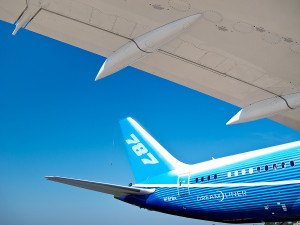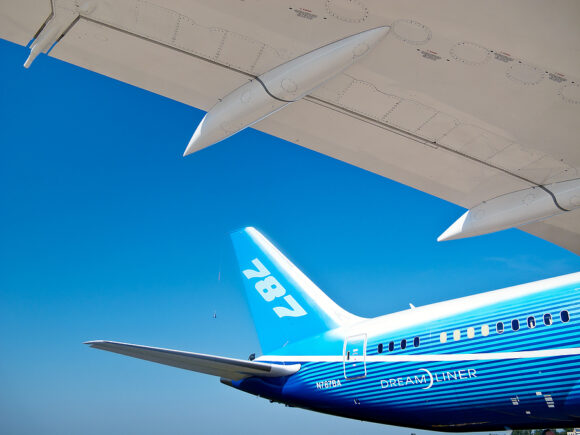A short circuit likely due to a manufacturing defect in a Boeing 787 airliner battery caused a fire last year that grounded the planes for more than three months, federal accident investigators said Monday. They also faulted the plane’s maker and the Federal Aviation Administration for designing and approving a battery design that didn’t protect against such a failure.
An inspection of the GS Yuasa manufacturing plant in Japan where the battery was made found that flaws and debris in lithium-ion aircraft batteries were going undetected, according to the National Transportation Safety Board report. Investigators were able to rule out other possible causes of the short circuit such as overcharging, external heat, or improper installation, the report said.
Boeing failed to anticipate, when testing the battery’s design, that a short circuit in one of the its eight cells might lead to uncontrolled overheating known as thermal runaway, which would spread to the other cells and cause them to vent smoke-like vapors and catch fire, the report said. The Federal Aviation Administration was faulted for not catching the design deficiency when it approved the plane for flight.
 The January 2013 fire in one of two batteries installed aboard a Japan Airlines 787 parked at Boston’s Logan International Airport was followed nine days later by a smoking battery that forced an emergency landing in Japan by an All Nippon Airways 787. The incidents led the FAA and aviation authorities around the globe to ground the entire 787 fleet for over three months while Boeing redesigned the airliner’s batteries, which run the plane’s auxiliary power systems.
The January 2013 fire in one of two batteries installed aboard a Japan Airlines 787 parked at Boston’s Logan International Airport was followed nine days later by a smoking battery that forced an emergency landing in Japan by an All Nippon Airways 787. The incidents led the FAA and aviation authorities around the globe to ground the entire 787 fleet for over three months while Boeing redesigned the airliner’s batteries, which run the plane’s auxiliary power systems.
The events were a severe blow to Boeing’s prestige. The 787, a long-range, wide-bodied airliner introduced in 2011, was the company’s newest and most technologically advanced plane.
After the incidents, Boeing made extensive changes to the battery and its charger, including more heat insulation, holes to vent any flame or smoke outside of the plane, and lower charging levels. The case that contains the cells was also strengthened. Boeing has said the redesign, approved by the FAA, should contain any overheating inside the battery and vent any smoke outside the plane.
There was a third incident in January of this year when vapors were discovered coming out of a battery in a Japan Airlines 787 parked at Tokyo’s main international airport. Boeing officials said the problem appeared to have been contained by the battery’s redesign.
Was this article valuable?
Here are more articles you may enjoy.


 Losses Top $20 Billion in Asia Floods as Climate Risks Grow
Losses Top $20 Billion in Asia Floods as Climate Risks Grow  NYT, Chicago Tribune Sue Perplexity AI as Copyright War Rages On
NYT, Chicago Tribune Sue Perplexity AI as Copyright War Rages On  Verlan Files Subro Suit Against Georgia Chemical Plant After $20M Payout on Fire
Verlan Files Subro Suit Against Georgia Chemical Plant After $20M Payout on Fire  State Farm Sued Over Policies Backed by Distressed Insurer PHL
State Farm Sued Over Policies Backed by Distressed Insurer PHL 